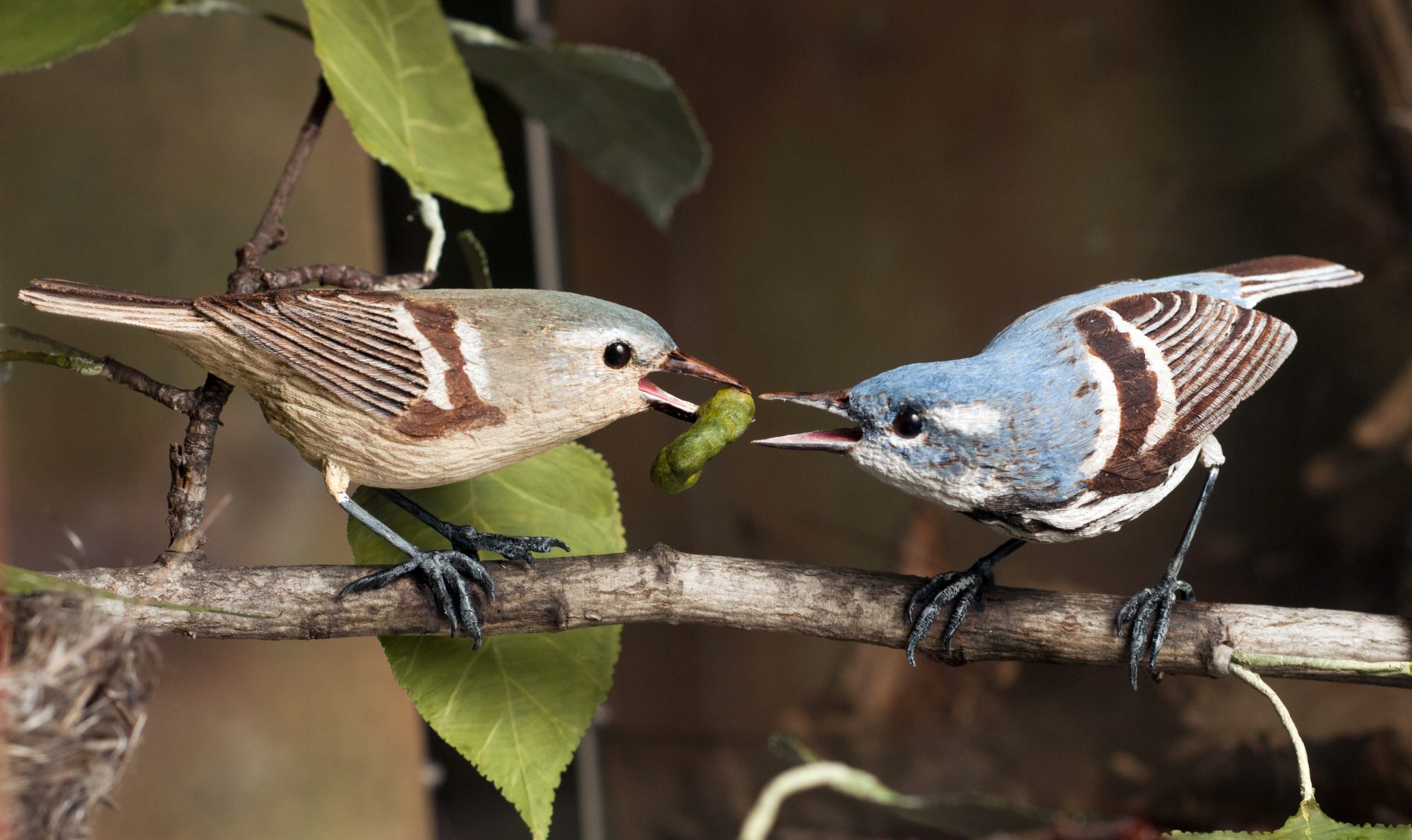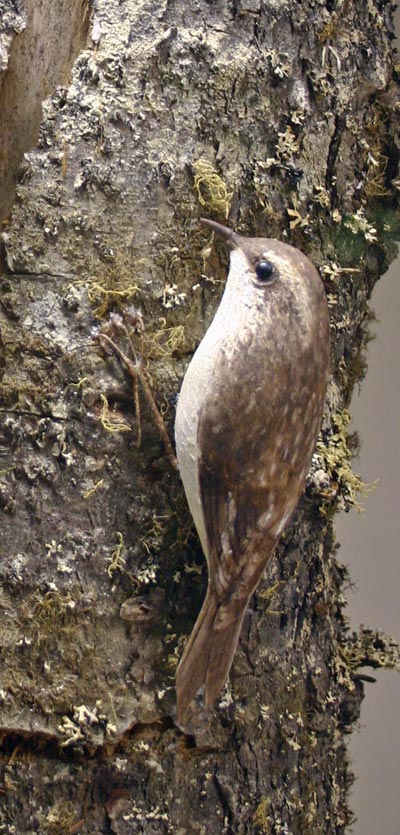Carved wooden birds don’t fly away
Take your time exploring detailed diorama-style exhibits showing birds from Vermont and elsewhere. Species are grouped generally by habitat, but some birds stand on their own.
Explore the Museum On the ground floor, there are two dioramas of shore- and wetland birds that can be found on and near Lake Champlain, a room of endangered and extinct species, two single-species displays of significant birds, cabinets of early carvings, and a window looking out on a feeding area that attracts wild birds.
Upstairs, examine a panorama of raptors, immerse yourself in aisles of birds that nest in Vermont’s forests and fields, and wander into the workshop/discovery room (where there are usually hands-on activities).
In addition to the permanent exhibits, we often have special or temporary shows, such as our themed art shows, or live birds at the feeders.
The Loon Family
Welcoming you into the Museum is a family of Common Loons (Gavia immer). This exhibit took 850 hours to carve and paint.
Endangered and Extinct
To your left as you leave the Gift Shop and the Loons, is a special gallery of Endangered and Extinct Birds of North America. There are 29 birds and an Achaeopteryx. A tropical scene with 11 birds represents the winter habitats of more than 50% of our own Vermont birds.
The California Condor (Gymnogyps californianus) in this room is one of Bob’s largest carvings, taking over 500 hours in all. This bird is so realistically detailed that each wing took 100 hours to make.
Wetlands in Spring and Fall
Follow the hall into two Wetland Dioramas, a Spring Migration scene and an Autumn Migration scene. This part of the collection holds more 63 ducks and shorebirds. The Spring habitat is typical of that near the Missisquoi Wildlife Refuge; the Fall habitat is more like what we see at Dead Creek Wildlife Management Area. Some species are shown in only one diorama although they may be seen in both seasons.
Ingrid Rhind, Dick Allen, and other carvers have contributed to these displays; others continue to do so. Acclaimed Vermont artist Libby Davidson painted these diorama backgrounds.
The Tom
Just down the hall from the Endangered and Extinct Gallery, and before you reach either the conference room or the Fall Migration diorama, you will find the glorious Wild Turkey (Meleagris gallopavo). This life-like carving, a testament to persistence, took Bob 2 years to complete, 1130hours in all.
A Panorama of Raptors
The second floor begins with the raptors. The hawks are often holding typical prey. The Bald Eagle (Haliaeetus leucocephalus) took Bob 400 hours to complete, partly because of the large size and especially because the brown color on the bird is burned with a hand tool, not painted. Look closely!
As you enter the next room, the Nesting Gallery, look up. Hanging from the ceiling are Vermont’s hawks in flight, life-size, showing the coloring and feather patterns that distinguish one raptors from one another.
Nesting Birds
The Nesting Birds gallery contains all the Vermont nesting birds in pairs, with their nests (real) and eggs (wooden). Each bird is show in habitats typical the species. There are over 120 free-standing exhibits; smaller children are encouraged to use the step stools.
Notice the leaves: all the broadleaf trees and branches have metal leaves, each one painstakingly cut, tooled, and painted.
On one side of the Nesting Gallery is a Winter Diorama (on the right as you enter) showing the birds likely to visit Vermont only in winter. Some only appear here in years when their food supplies up north have dwindled. Some of the corvids are shown in their own case.
Still more to come
You may notice some “flat birds” as you go through the Museum. These are placeholders, painted by Libby Davidson. Each one represents a to-be-carved species, and each year, a few of them are retired when its full carving arrives.
- Wetlands
- Endangered & Extinct
- Raptors
- Nesting Birds
- Workshop / Discovery
- The Viewing Window

